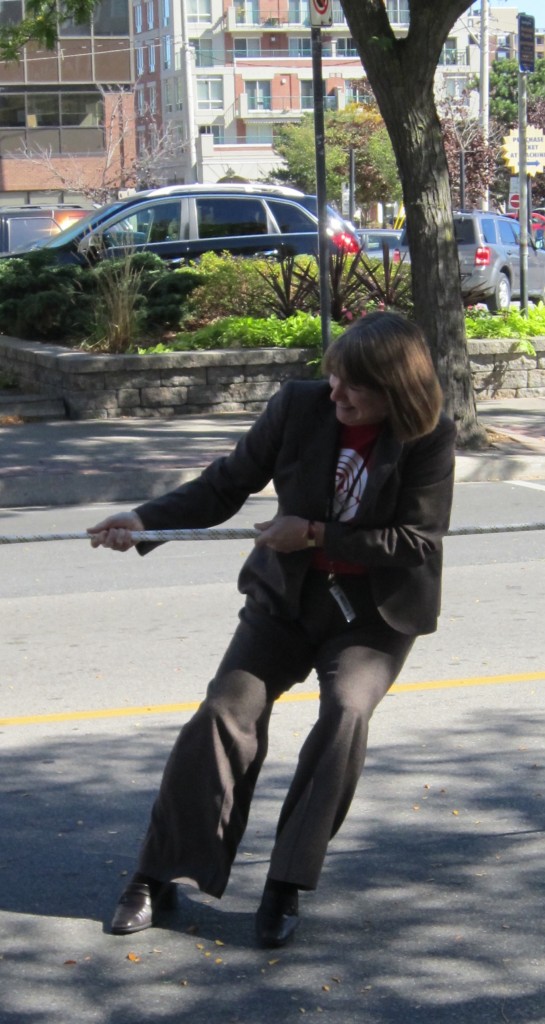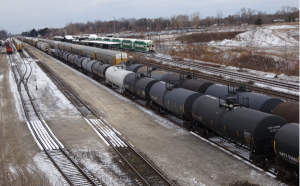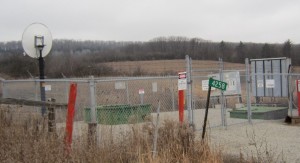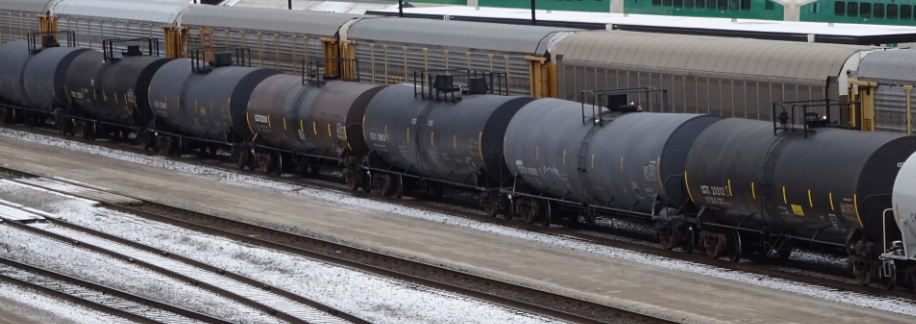 By Pepper Parr
By Pepper Parr
December 1, 2014
BURLINGTON, ON
“Risk is everywhere, regardless of the neighbourhood” says Fire Chief Tony Bavota and he adds “we can’t stop the wind or the rain but we can prepare for it. Same holds true for any emergency or hazard.”
Chief Bavota is going to be the GO TO guy when there is an emergency. Up until very recently responsibility for the fire department fell to a city general manager. The latest to fill that role was Kim Phillips who took a retirement package and is now where all good municipal civil servants go.

Burlington Fire Chief Tony Bavota; personable; believes in managing relationships.
With no general manager to lead the task fell to interim city manager Pat Moyle – which was sort of OK until the rains came down August 4th and Moyle was at his family cottage with a cell phone that was both out of range and out of juice.
Moyle learned how bad things were in the city when he drove into town to pick up some supplies – he headed straight for Burlington.
That was when Pat Moyle decided Emergency Measure problems had to rest in the hands of either the police chief or the fire chief. For a number of reasons and some provincial policy the responsibility was given to the fire chief who then began to re-organize his operation to handle situations like the rain storm. Moyle wasn’t going to see the city caught in that kind of jam again.
There is a report working its way through the cubicles at city hall that will transfer emergency measure authority from a city general manager to the fire chief. It is expected to be tabled in January

Former city manager Kim Phillips was always good at pitching in.
Last August, city general manager Scott Stewart was the only top tier bureaucrat in town when the rain wouldn’t stop falling. He immediately chased down Kim Phillips and either drafted her or made her an offer she couldn’t refuse – whichever, Phillips was back in harness for a few days.
Bavota explains that the fire department always has a senior chief on duty. Burlington has several deputy chiefs and a number of people trained to handle natural disasters as well as those that are man-made.
When the Via Rail train went off the tracks back in 2011 the Mayor and his city manager took the lead in terms of talking to the public but it was the police chief who was point on the accident along with CN Rail staff.
When the ice storm brought the city to its knees hydro people were in the field but it was the fire chief and the city manager who were at the front line.
The city realized it had to get a clearer chain of command in place.

Eighteen of these freight trains travel through Burlington each day.
Bavota points out that there are 60 staff who are currently trained with IMS 100, which is the introduction level. Level 300 is the highest level with level 400 being worked on. Two deputies are trained at level 300.
In terms of disasters that many see as just waiting to happen (The fire chief is not amongst that crowd) there are two areas of specific concern – Enbridge’s Line 9 that runs across the city in the Escarpment and the tank cars that run through the city.
If there were a break in any one of those 39 year old pipes that run across the Escarpment the city could be facing a serious problem with bitumen seeping into the headwaters of the seven creeks that flow into the lake.
Enbridge is currently bickering with the National Energy Board over the number of shut off valves that should be in place. The NEB wants a valve within a km of every creek and river. Enbridge is saying that they have all the protection needed in place now and that if there were to be a spill there “rapid response teams” wold handle the problem.
Try telling that to the people in Kalmazoo, Michigan.

Shut off valves in Burlington’s Escarpment. Are there enough of them?
Bavota wants to see more shut off valves and works with neighbouring municipalities to make sure the message is heard by Enbridge.
The fire department meets with Enbridge reps regularly and are available as needed. Enbridge has done training of our staff and we recently sent two senior staff to attend training with them where they simulated spill at Grindstone Creek
Chief Bavota says he has an excellent working relationship with Enbridge and has already done at least one spill exercise in the Grindstone Creek area of the city and is satisfied that we are safe from pipeline oil spill accidents.
For Bavota – the approach is to “work the relationship”. He heads up a service that is vital and expensive and while his organization has something of a military tinge to it, where the chain of command is vital he doesn’t get mired in that stuff.
He is a people person with a sense of humour who doesn’t take himself too seriously. He is a former police officer.

No one knows what is in those tank cars as they work their way through the city. We get data several month later setting out what passed through the city. Is that sort of like closing the barn door after the horse has run out?
The second concern for Burlingtonians is the potential for serious damage should there be a train derailment. CN Rail pulls 18 freight trains through the city every day and the fire department never knows just what is in the tank cars that roll through town.
This is a fact of urban life explains the chief who goes on to add that he does get aggregate data every quarter and he can parse that data and figure out where he wants his assets and resources to be located.
A new Deputy showed up for work December 1st. Karen Roche join the city as the newest deputy fire chief, She began her fire career with Burlington’s fire department as a volunteer fire fighter in 1996 and worked with us until 2002, when she left to work with the Hamilton Fire Department. Roche has 18 years of progressive fire service experience and was the Assistant Deputy Chief for the Hamilton Fire Department.
Prior to joining the fire service, Roche was employed as a critical care nurse in the Medical/Intensive Care Unit at Toronto General Hospital.
Roche holds a Nursing Diploma, has completed several emergency management courses, and is a graduate of the Fire Leadership Program at Dalhousie University. She is currently enrolled in the Local Government Program at the University of Western Ontario.
She will take on the role of Community Emergency Management Coordinator (CEMC).
The city’s emergency plan will have to be reviewed by Council said Bavota who will continue to train his team. The risk assessment becomes the cornerstone of emergency management.














